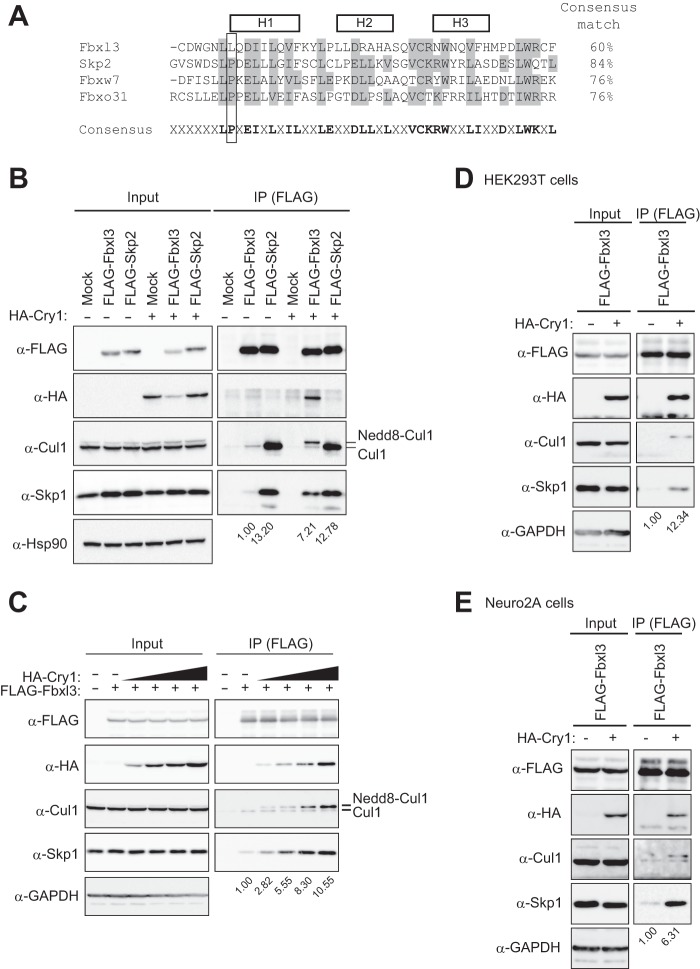FIGURE 1.
Formation of the SCFFbxl3 complex is dependent on the expression level of Cry1. A, amino acid sequences of the F-box domains of human Fbxl3, Skp2, Fbxw7, and Fbxo31 are aligned. Gray shading highlights residues similar or identical to those of the consensus sequence. The general locations of helices (H1–H3) are also indicated. B, lysates of HeLa cells expressing FLAG-tagged forms of Fbxl3 or Skp2 as well as HA-tagged Cry1 were subjected to immunoprecipitation (IP) with anti-FLAG, and the resulting precipitates, as well as the original cell lysates (Input), were subjected to immunoblot analysis with antibodies to (α-) the indicated proteins. The relative intensities of Skp1 bands are indicated. C, lysates of HeLa cells expressing FLAG-tagged Fbxl3 in the absence or presence of various amounts (1×, 2×, 3×, 4×) of HA-tagged Cry1 were subjected to immunoprecipitation with anti-FLAG, and the resulting precipitates, as well as the original cell lysates, were subjected to immunoblot analysis with antibodies to the indicated proteins. D and E, lysates of HEK293T (D) or Neuro2A (E) cells expressing FLAG-tagged Fbxl3 as well as HA-tagged Cry1 were subjected to immunoprecipitation followed by immunoblot analysis as in B.

